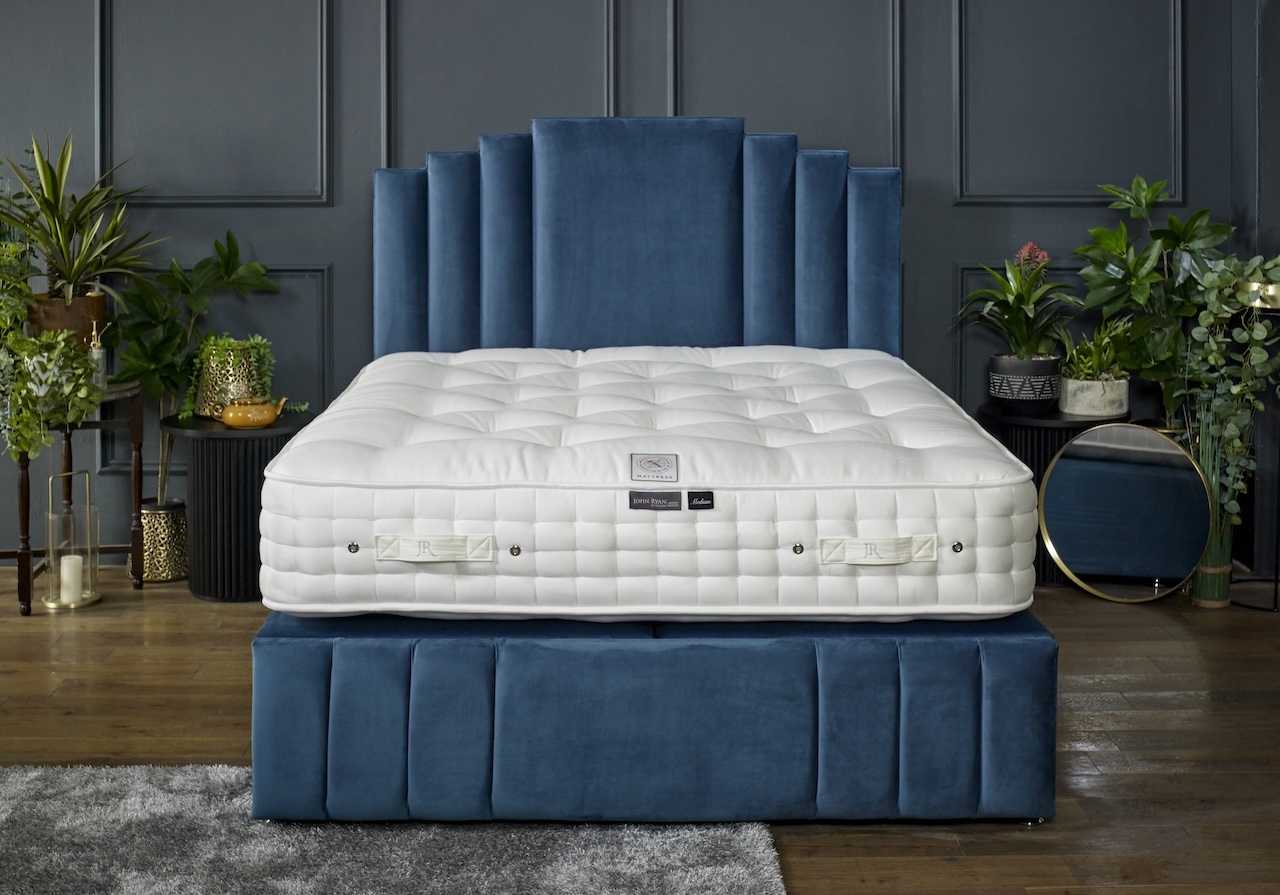Mattress Science
January 2024The Best Sleep Sounds for a Blissful Night’s Sleep
A restful night’s sleep is essential for our overall well-being, and the right sleep environment plays a pivotal role in achieving this. Everybody knows that a bad nights sleep or difficulty getting to sleep leads us to be irritable, cranky, suffer with attention and feel groggy the next day.
Harnessing the power of soothing ‘Sleep Sounds’ is a natural and effective way to create an atmosphere that can help you drift off easily each night. In this expert guide, we explore the science behind the impact of sound on sleep and present a curated selection of the best ‘Sleep Sounds’ for you to experiment with to help you achieve a blissful night’s sleep.
1. The Science of Sleep Sounds
Understanding the science of sleep sounds involves delving into the realm of psychoacoustics—the study of how sounds are perceived by the human brain. Certain sounds have the ability to evoke a calming response, reduce stress, and promote a state of relaxation, making them ideal companions for bedtime. Using sleep sounds focuses on these sounds to help soften and relax your state of mind before finally drifting off to sleep.
But what causes this feeling of relaxation and rest when using sleep sounds?
A) Neurological Responses
The brain’s response to sleep sounds involves intricate neurological pathways. When exposed to calming sounds, the brain’s limbic system, responsible for emotions and memory, is engaged. This activation triggers the release of neurotransmitters like serotonin and dopamine, fostering a sense of tranquility and reducing stress levels.
Dopamine, a neurotransmitter with multifaceted functions in the brain, contributes to the regulation of the sleep-wake cycle by influencing the circadian rhythm. Its involvement in reward and pleasure pathways promotes a positive mood and stress reduction, fostering an environment conducive to relaxation and sleep initiation.
B) Stress Reduction and Cortisol Regulation
Sleep sounds have been linked to stress reduction by influencing the secretion of cortisol, the stress hormone. Calming auditory stimuli activate the parasympathetic nervous system, which counteracts the “fight or flight” response, leading to a decrease in cortisol levels.
This physiological shift promotes relaxation and prepares the body for sleep.
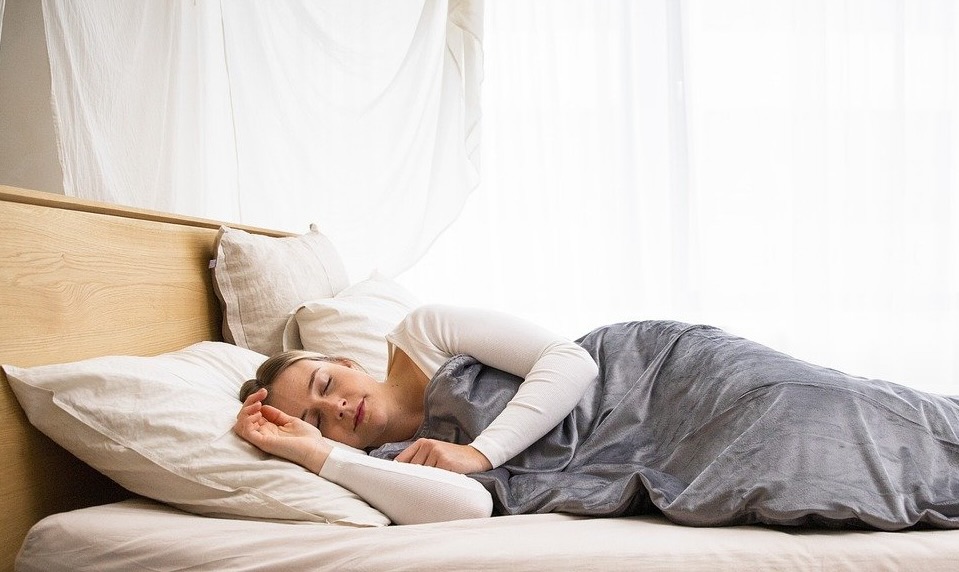
C) Influence on Brainwave Patterns
The brain operates at different frequencies, known as brainwave patterns, which correspond to various states of consciousness. Sleep sounds, such as binaural beats or rhythmic nature sounds, may influence these brainwave patterns. For instance, delta waves, associated with deep sleep, can be encouraged by certain sleep sounds, contributing to a more profound and restorative sleep experience.
D) Triggering the Relaxation Response
The relaxation response, coined by Dr. Herbert Benson, is a state of deep rest that counters the stress-induced “fight or flight” response. Sleep sounds act as triggers for this response by promoting physiological changes, including a slowed heart rate, decreased muscle tension, and enhanced overall well-being.
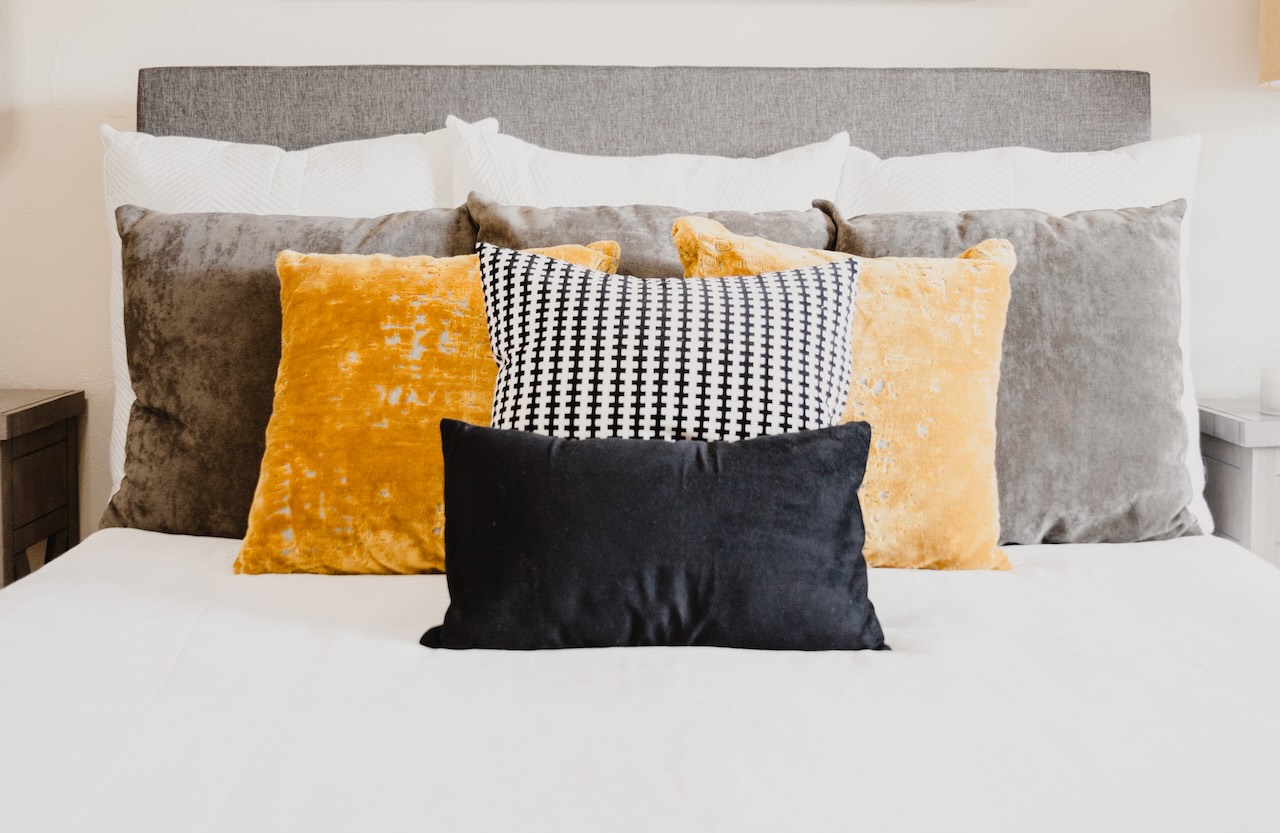
E) Masking Disruptive Noises
Beyond their impact on brain function, sleep sounds serve a practical function by masking disruptive noises in the environment. This can be especially helpful for sleepers who struggle with noisy neighbours, road rage or traffic outside their bedroom.
White noise, for example, effectively covers a spectrum of frequencies, drowning out sudden sounds that may interrupt sleep. This masking effect creates a more consistent auditory environment conducive to relaxation.

What are the best sleep sounds to get to sleep better?
Now that we understand how sleep sounds can help sleep better, which sounds work best? Everyone is different when it comes to psychoacoustics, but there are some known sounds and sound patterns that can help you sleep better. Most of these sleep sounds can be found in apps for your phone or as downloaded sound files that you can play over your phone or a Bluetooth speaker in the bedroom.
Let’s take a look at some of the best-used sleep sounds to see what may work for you.
1. White Noise
White noise, a consistent sound that covers a broad frequency range, acts as a sonic blanket, masking disruptive noises that might disturb your sleep. Fans, air purifiers, or purpose-built white noise machines can produce this steady hum, creating a soothing auditory backdrop.
This masking effect results in a more consistent and predictable sound backdrop, which can drown out background noises such as traffic, conversations, or household sounds. Even that loud-voiced neighbour or flatmate that watches late-night horror movies at full volume can be counteracted by white noise. All by providing a steady and continuous auditory signal. This white noise reduces the likelihood of sudden disruptions, allowing individuals to relax, unwind, and attain a more peaceful and undisturbed night’s sleep.

2. Nature Sounds
The gentle sounds of nature, such as flowing water, rustling leaves, or singing birds, have been proven to promote relaxation and reduce stress. Nature sounds mimic the environment’s calming qualities, transporting you to a tranquil setting perfect for sleep. Because these sounds are rhythmic and there are very few changes in pace or volume, your brain can quickly switch off, a bit like the sound of rain in a room when in bed.
In fact, if any of your readers are long-distance travellers, a lot of noise-cancelling headphones work incredibly well with nature sounds played in the background when travelling by air or train. This removes the ambient noise of fellow passengers and the noise of fans and helps you drift off with nature.

3. Pink Noise
Similar to white noise, pink noise is characterized by a consistent sound, but it has more power in the lower frequencies. This makes it deeper and more balanced, providing a comforting auditory experience. Pink noise can be found in nature, like the sound of falling rain or ocean waves.
The term “pink” refers to the distribution of energy across the audible spectrum, resulting in a sound that has more power in the lower frequencies compared to higher frequencies.

The power density of pink noise decreases by half with each octave, creating a perceptually even sound. In contrast to white noise, which has equal energy at all frequencies, pink noise has a more natural and balanced tonal quality.
Pink noise is commonly used in various applications, including sound engineering and acoustics, and as a background sound for relaxation and sleep. Like white noise, it can be found in nature, with examples such as the sound of falling rain, rustling leaves, or ocean waves having pink noise characteristics.
4. Binaural Beats
Binaural beats involve playing slightly different frequencies in each ear, creating an auditory illusion known as a beat. These beats have been associated with changes in brainwave patterns, potentially aiding in relaxation and promoting sleep. Apps and recordings designed for sleep often incorporate binaural beats.
For example, if a tone of 400 Hz is presented to one ear and a tone of 410 Hz to the other ear, the brain perceives a binaural beat with a frequency of 10 Hz. This perceived beat frequency is often in the range of brainwave frequencies, such as alpha, beta, delta, or theta waves.
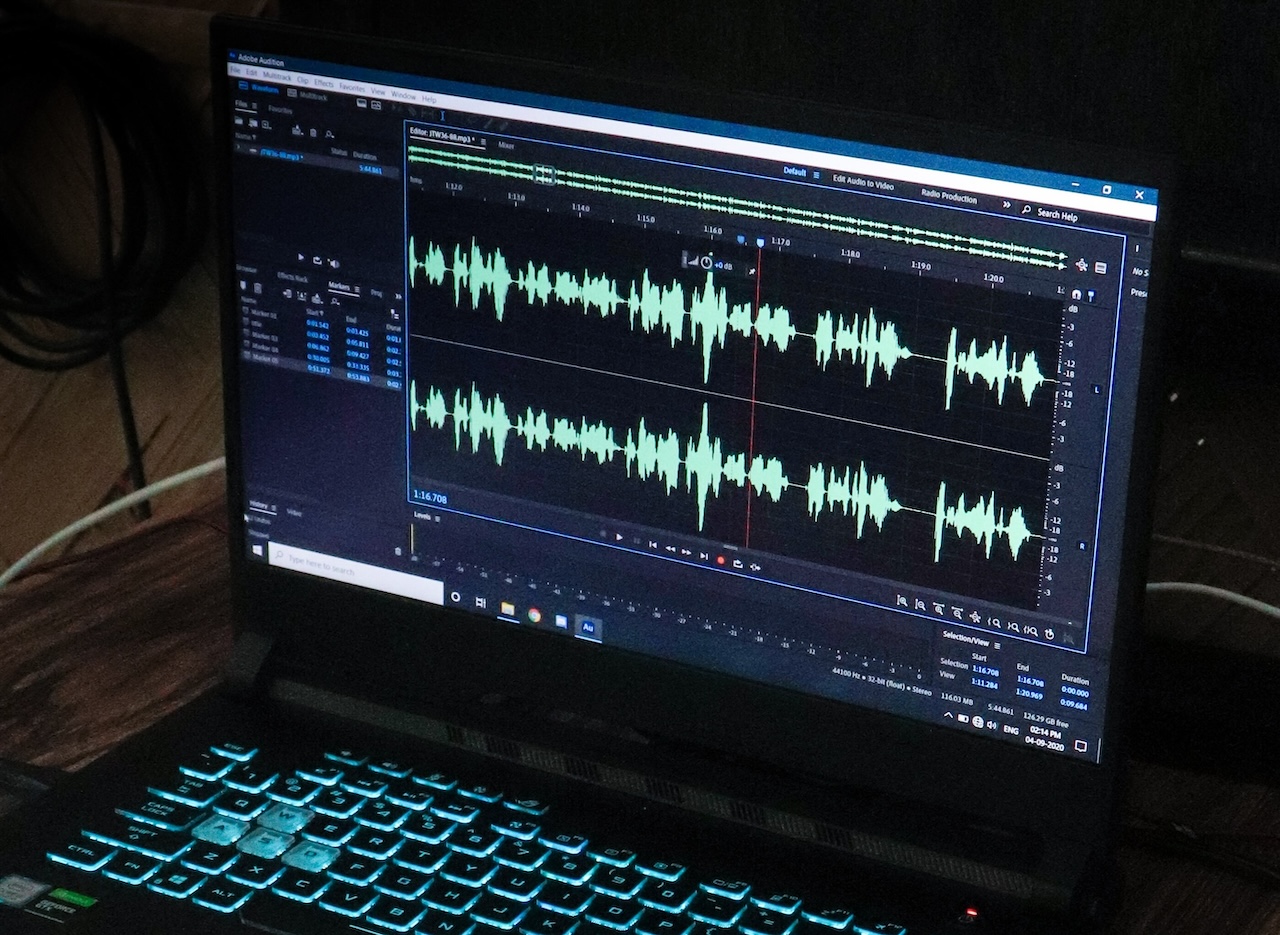
Binaural beats have been studied for their potential effects on brainwave patterns and mental states. Some proponents suggest that listening to binaural beats at specific frequencies may influence cognitive functions, mood, and even induce states of relaxation or alertness. However, scientific evidence supporting the efficacy of binaural beats for these purposes is mixed, and more research is needed to fully understand their impact on the brain and behavior.
5. ASMR (Autonomous Sensory Meridian Response)
ASMR involves the use of specific auditory stimuli, such as whispering, tapping, or crinkling sounds, to induce a tingling sensation and a sense of calm.
ASMR videos or audio typically feature a variety of gentle and repetitive sounds, such as whispering, tapping, or crinkling. These sounds are often recorded in a close, binaural manner, creating a sense of spatial proximity for the listener. The intentional use of soothing and predictable sounds, combined with careful attention to audio quality, aims to trigger a pleasurable and calming response in those who are receptive to ASMR.
The tingling sensations associated with ASMR are thought to result from the release of endorphins, the body’s natural feel-good chemicals. Additionally, ASMR content often serves as a form of auditory or visual relaxation, helping individuals unwind and de-stress, which can be conducive to falling asleep.
Many individuals find ASMR content on platforms like YouTube helpful for winding down before sleep.
6. Soft Music
Slow-tempo instrumental music with a calming melody can create a serene ambience for bedtime. Avoid music with lyrics or upbeat tempos, as they may be stimulating rather than relaxing. Soft piano music or instrumental lullabies designed for relaxation can be comforting. Look for compositions with gentle melodies and minimalistic arrangements.
Many people find classical music, particularly compositions with slow tempos and gentle melodies, to be soothing. Pieces like Debussy’s “Clair de Lune” or Satie’s “Gymnopédie No. 1” are often recommended for bedtime.

7. Guided Meditation and Sleep Stories
Incorporating guided meditation or sleep stories into your bedtime routine can help shift your focus away from daily stressors. Calming narration, accompanied by soothing background music or sounds, can guide your mind into a state of tranquillity. Aim to meditate around 30 minutes before going to bed to help calm the mind and slow your breathing down, ready for sleep.
8. Tibetan Singing Bowls
The resonant tones of Tibetan singing bowls are renowned for their therapeutic effects. The harmonious vibrations produced by these bowls can induce a sense of calm, making them an excellent choice for enhancing relaxation before sleep.
Try downloading Tibetan singing bowl tones or bell chimes and then play them on your phone with a timer to turn off after 15 – 20 minutes. Alternatively, strike the bowl with the wooden striker and then close your eyes.
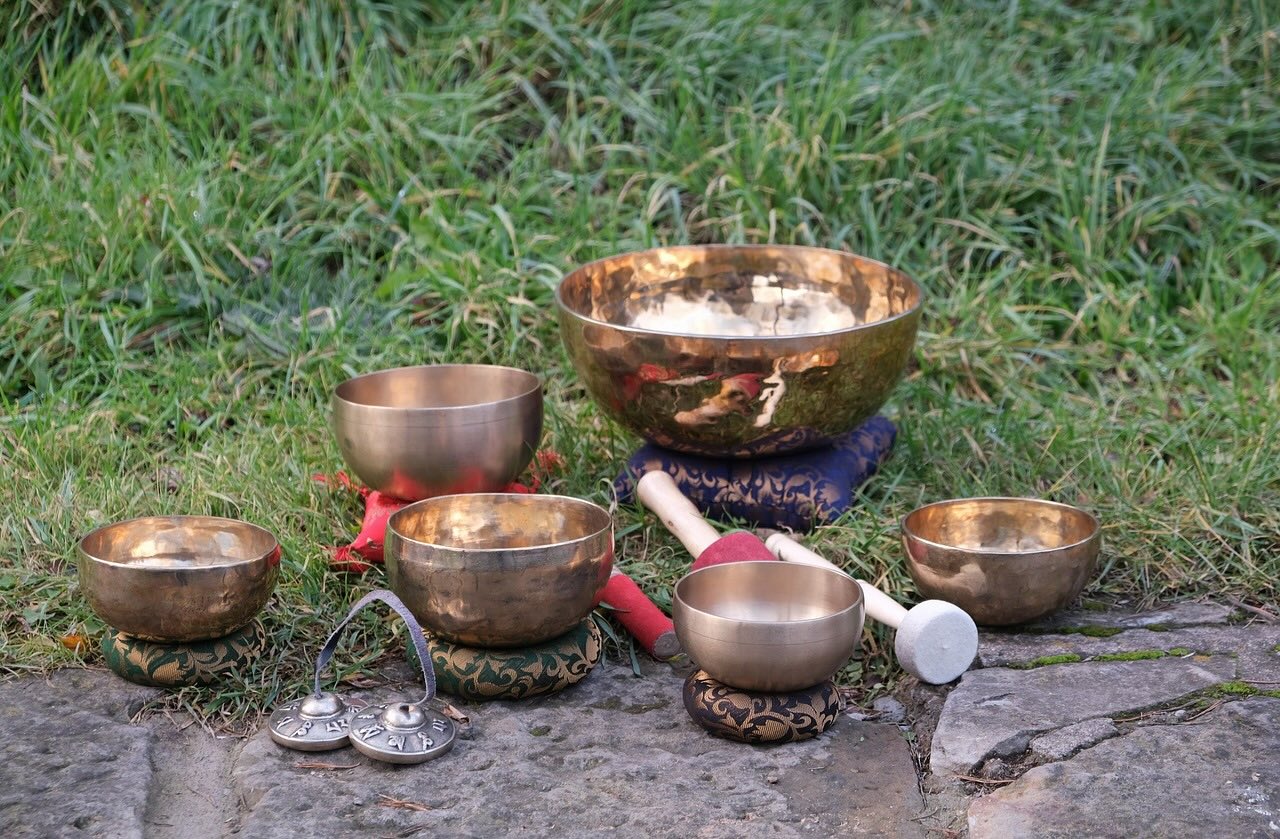
9. Customizable Soundscapes
Apps and devices offer customizable soundscapes that allow you to blend different sounds according to your preferences. Whether it’s a combination of rainfall, distant thunder, and a gentle breeze, or the rhythmic hum of a train, customization ensures a personalized and effective sleep soundtrack.
How to use sleep sounds?
You may be wondering how on earth you use these sounds to sleep without needing to turn them off without waking up, which is a common question. The good news is you can use plenty of sleep sound apps with timers, or even sleep sound machines.
What is key is finding equipment that allows you to play the sound(s) that has an automatic timed-off switch so the sounds don’t inadvertently wake you up later on. The best use of sleep sounds is to use them to help you drift off into the first stage of REM sleep and then have them stop once you are asleep.
1. Use a Sleep Sound Machine or App
Invest in a dedicated sleep sound machine or use a sleep sounds app on your smartphone or tablet. These devices often offer a variety of sounds and customizable options. Use your phones app store to search for one that works for you and your device.
2. Optimize Volume Levels
Set the volume to a comfortable level. It should be loud enough to mask disruptive noises but not so loud that it becomes a distraction. Experiment to find the right balance for your preferences.
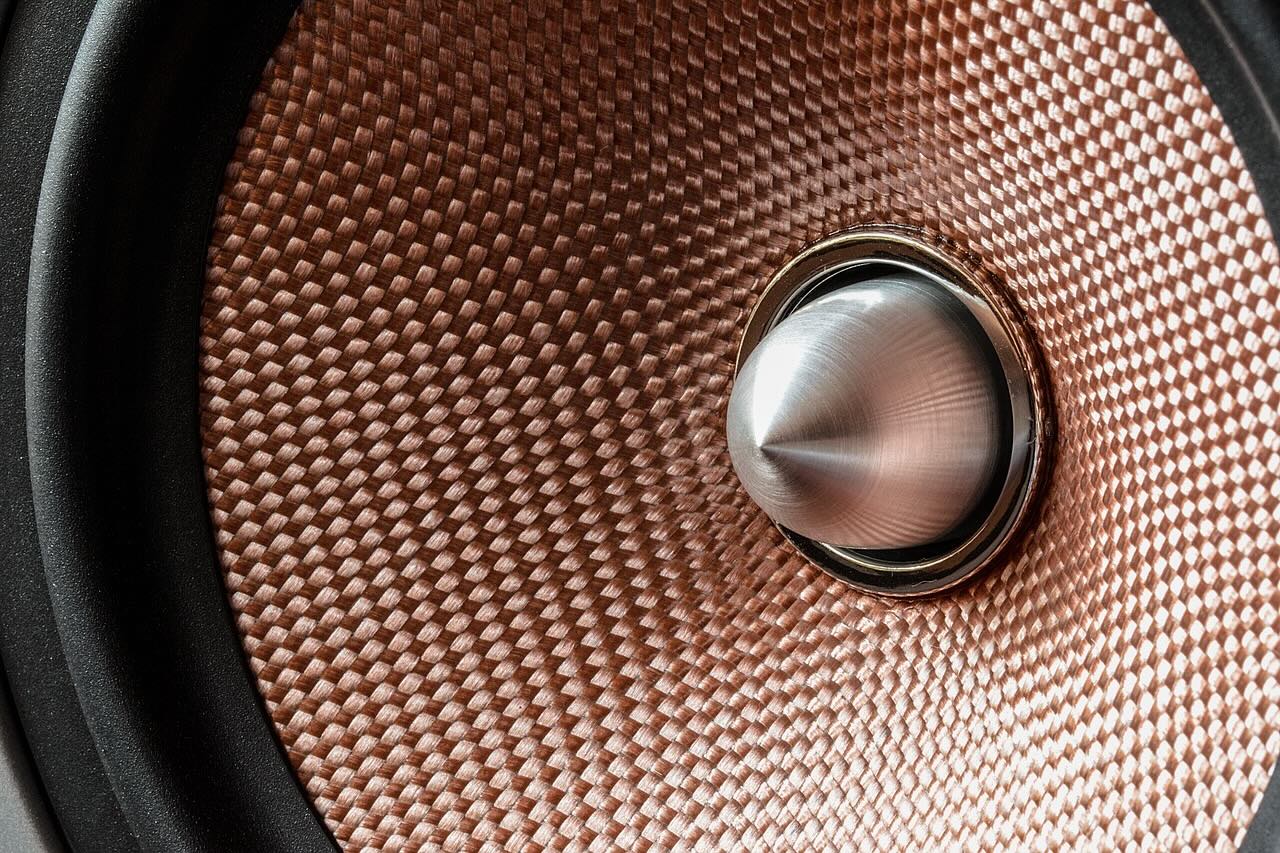
3. Consider Headphones or Earphones
Consider using headphones or earphones if you share a bedroom and have different sleep preferences. This allows each person to personalize their sleep sounds without disturbing the other. However, be mindful that both in-ear and over-ear headphones can become uncomfortable with long use, and as you turn over in bed, they can actually wake you up!
4. Timed Playback of Sleep Sounds
Many sleep sound machines and apps have a timer feature. Set a timer to automatically turn off the sounds after a certain duration, ensuring that you’re not disrupted by the sounds during the later stages of sleep.
We advise having sleep sounds on for no longer than 60 minutes. Most people find 15-30 minutes enough.
5. Create a Consistent Bedtime Routine
Incorporate sleep sounds into a consistent bedtime routine. Whether you listen for a few minutes before getting into bed or throughout the night, a routine signals to your body that it’s time to wind down. Hot baths, hot chocolate or meditation before you get into bed can all help get you ready for a deeper sleep.
6. Experiment with Different Sounds
Explore different sleep sounds to find what works best for you. Some nights you might prefer gentle rainfall, while other nights you may opt for a calming melody or white noise. Using sleep sounds can take a few weeks to get used to so make sure you’re in it for the long run to see what works for you and any sleeping partner.
7. Create a Dark and Comfortable Bedroom Environment
Ensure your bedroom is conducive to sleep by keeping it dark, cool, and comfortable. Dim the lights and create an environment that promotes relaxation alongside soothing sounds. Ensure that your mattress, bedding and pillows are all suitable for your sleeping position and comfort preferences.
You would be shocked at how many people get in touch with us who are sleeping on unsuitable mattresses or the wrong pocket spring tension, which, once resolved, revolutionised their sleep patterns!
Sleep sounds can help you block out unwanted noise and drift off to a perfect nights sleep
But what if its your bed or mattress thats causing the issue?
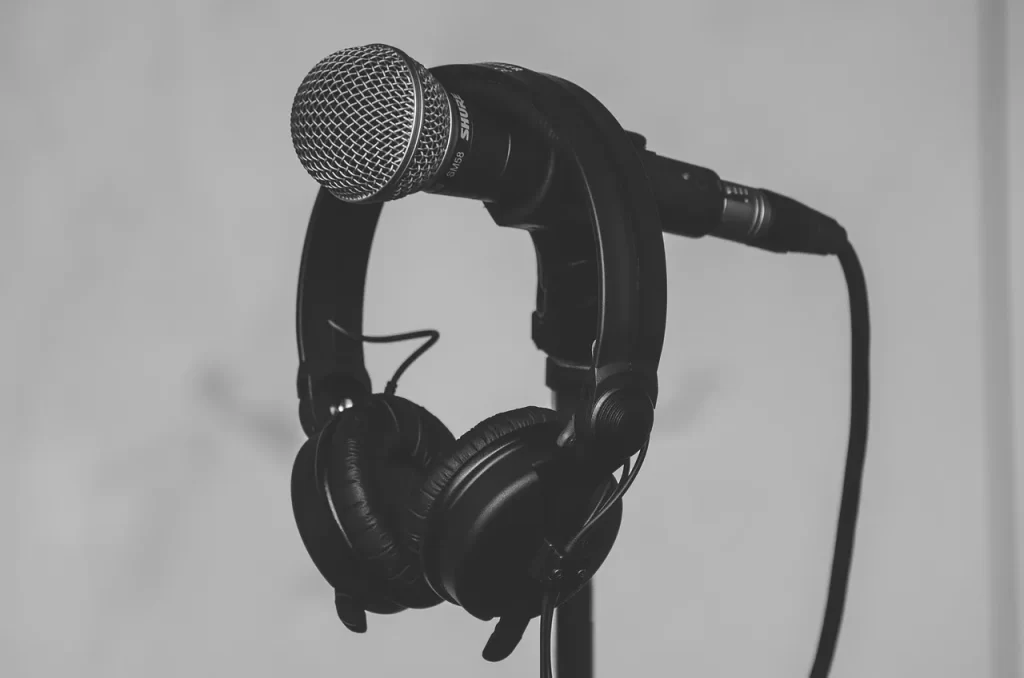
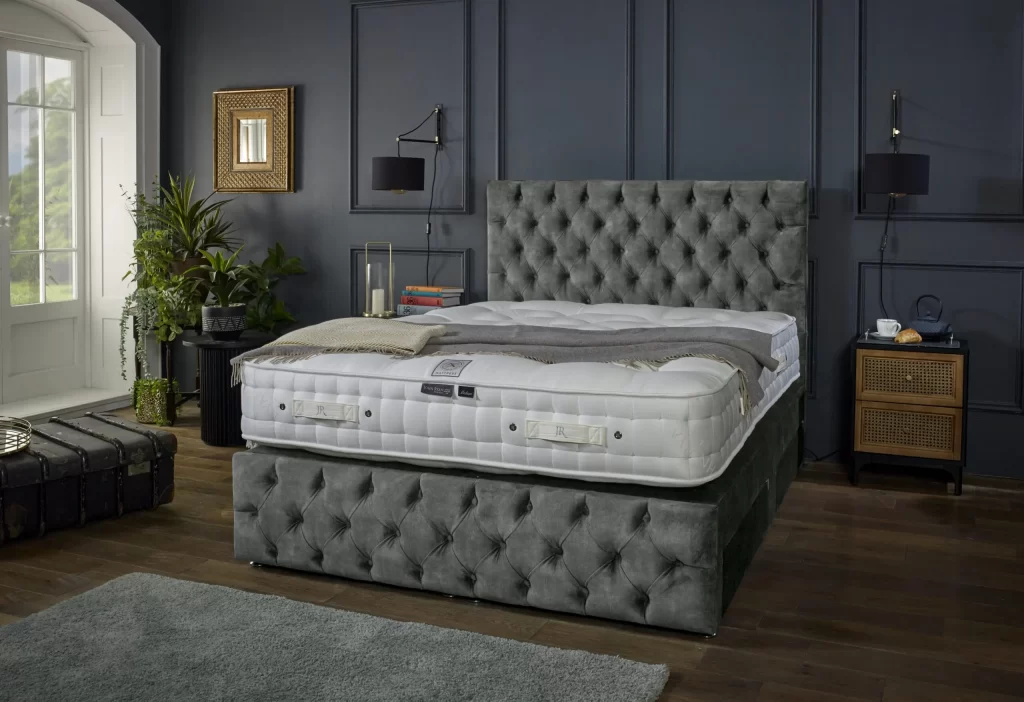
Check your mattress isn’t keeping you awake
Whilst sleep sounds can help you drift off for a fabulous night’s sleep, what if it’s your mattress that’s waking you up or causing you to still feel groggy? Given how much time we spend in bed, it’s worth checking that the mattress you have is suitable for you, is still in good shape, and can offer you the best night’s sleep possible.
Here are some quick tips to make sure your mattress is the right fit for you.
1. Check the spring tension
Is your mattress the right spring tension for your body weight? If you have never even thought of this or been asked when you bought it, you could be in for a shock. Each pocket spring tension is manufactured for different weight tolerances and ranges. So it’s important to check. Use our handy table below when reviewing what’s inside your current mattress.
| Spring Tension | Wire diameter (Gauge) | Weight Range |
|---|---|---|
| Soft | 1.2mm | Bespoke Tension (Please Call) |
| Medium | 1.4mm | Upto 16 stone |
| Firm | 1.6mm | 16 stone plus |
| Extra Firm / Orthopaedic | 1.9mm | 20 stone plus |
2. What is your mattress made of?
If your mattress is keeping you awake due to heat or night sweats it could be made of memory foam that’s keeping you awake. If you’re finding yourself tossing and turning due to a lumpy mattress, it could be the fact it’s a one-sided mattress and has settled. This is where all the fibres compress in the same place each night, causing lumps and bumps.
This is why rotating and turning your mattress each month is essential to reduce natural settlement so it doesn’t keep you awake at night.

3. Is your mattress past its use-by date?
Did you know that most entry-level retail mattresses are only made to last around 7 years?
This is especially true of one-sided mattresses; after all, there are only half as many fillings in them compared to two-sided pocket spring mattresses. Also, man-made foams like memory and hybrid foams tend to compress and start to dip after 5-7 years. If your mattress is older than this, it may be time to consider a replacement.
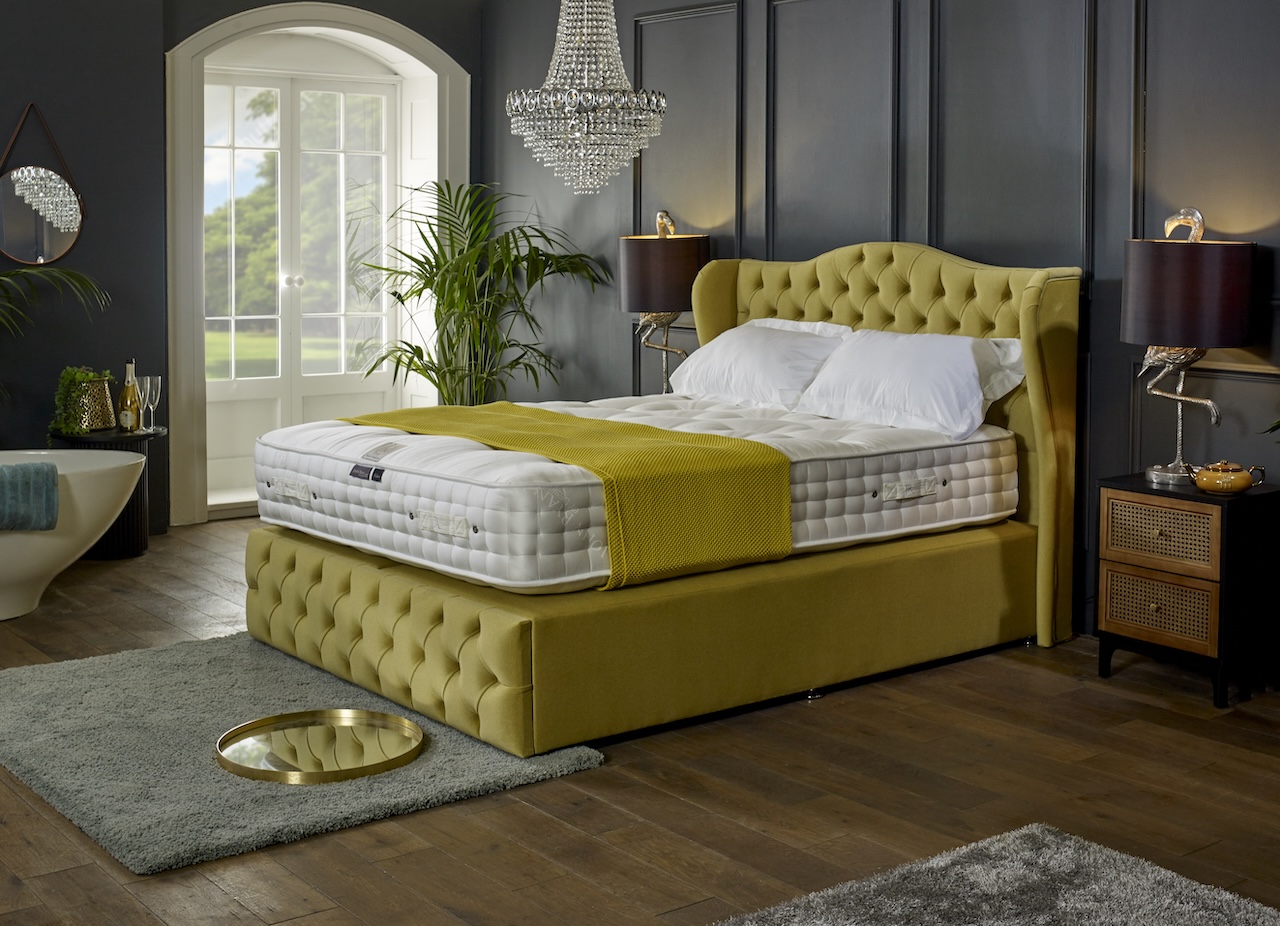 One way to extend the life of your mattress is to ensure you always choose a 2-sided model which can last upwards of 25 years with mattress care and monthly turning. Choosing natural fibres will ensure your mattress lasts longer and is breathable, unlike memory foam beds.
One way to extend the life of your mattress is to ensure you always choose a 2-sided model which can last upwards of 25 years with mattress care and monthly turning. Choosing natural fibres will ensure your mattress lasts longer and is breathable, unlike memory foam beds.
By spending a bit more time researching and less time following the myriads of fake sales and bedroom stores trying to sell you any model, you can help improve your sleep drastically.
Summary
Incorporating the best sleep sounds into your bedtime routine is a powerful and accessible way to enhance the quality of your sleep. The key lies in finding the sounds that resonate with you personally, creating a tailored auditory experience that lulls you into a state of serenity. Experiment with different sleep sounds, consider combining them, and let the gentle symphony guide you towards a blissful night’s sleep. Sweet dreams await as you embrace the therapeutic power of sleep-inducing sounds in your nightly ritual.

Dreaming of the perfect nights sleep?

Ask us a question
There are over 6000 questions and answers submitted by you on all questions about mattresses and bed problems. Enter a keyword such as Vi Spring, John Lewis beds, bad back or Memory Foam and see if your question has already been answered.
If you can’t find an answer in knowledge hub, ask a new question. We aim to respond to all questions within one working day.
Newsletter
Enter your email to join our newsletter. We’ll send you occasional news and mattress expertise.

